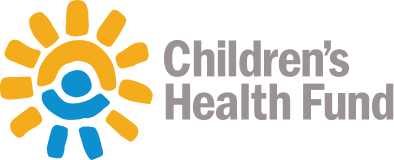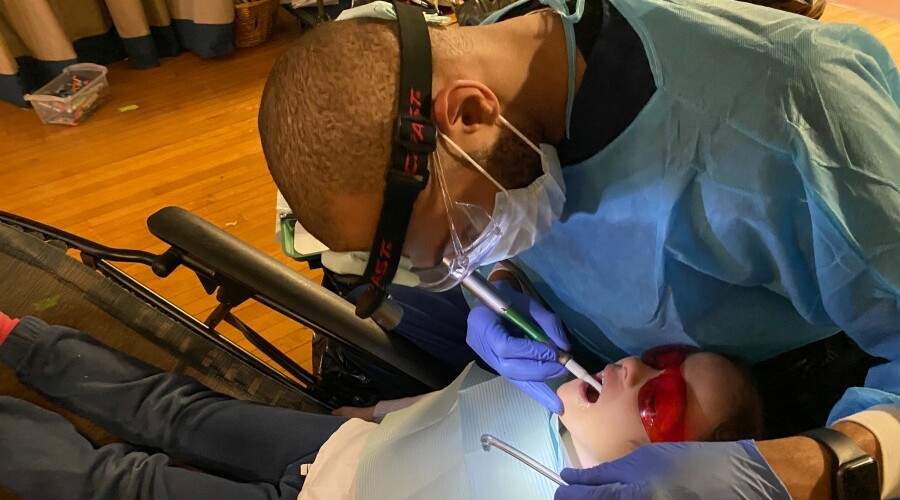COVID-19 inequities are impacting children’s access to dental care, and children in underinvested communities are impacted the most. Community healthcare and corporate action can help.
There is no dispute, the COVID-19 pandemic severely disrupted children’s education. What is less well understood is the impact school closures have had on health services for students. Schools have become logical and influential places to reach children with medical, mental health, and dental services. Especially in low-income neighborhoods, these in-school services provide care their families are hard-pressed to access otherwise.
At the onset of the pandemic, oral healthcare was greatly curtailed. As late as summer, providers had not yet reopened, hampered by PPE shortages and families’ fear of contracting the virus. Dental providers who offered care in schools were dependent on schools reopening, and still today even as schools reopen, many districts limit building access to only students and school education staff. This has meant that thousands of students have gone without basic dental services or screening since the pandemic started. And this matters, because it has serious consequences.
Cavities—the second most common chronic health condition after asthma in children and adolescents—are largely preventable. Yet, an estimated 19% of children between the ages of five and 19 have untreated cavities. Intervening early can help ensure children’s physical growth and self-confidence are not damaged. Oral problems can set kids back in even more far-reaching ways. According to The American Journal of Public Health, students with toothaches are nearly six times more likely to be absent from school and four times more likely to have lower grades compared to their peers without dental pain.
Oral Health in Marginalized Communities
Dental decay is more common in low-income, uninsured, rural, immigrant, and racial and ethnic minority populations, according to the Annual Review of Public Health. That’s why community-based dental services, especially school-based services, are an essential component of oral health promotion in these communities. When dental providers come to schools, parents don’t have to worry about transportation or taking time off from work for appointments to get their kids dental care. In fact, oral care in schools is more effective in making sure kids see dental providers and don’t miss appointments than when they are referred after a screening.
Eliminating barriers to healthcare is a focus for Children’s Health Fund. We understand the role that systemic racism plays in shaping health, and are committed to addressing the root causes that perpetuate inequities. It’s not enough that oral health providers exist in communities if families cannot get to them. To level the playing field, our partner programs bring comprehensive primary healthcare directly to children; work in collaboration with communities to create responses to critical needs; and improve the quality of life through policy and advocacy efforts that really build health equity.
Corporate action can also make a difference. The Guardian Life Insurance Company of America (Guardian Life) is a supporter of dental care for children living in under-resourced communities with the Guardians of the Smile program. The company funds direct delivery of dental services at seven Children’s Health Fund partner locations, whether via mobile dental clinics, schools, or traditional fixed-site locations.
School-Based Efforts in New York City
Guardian Life recently underwrote a report on school-based dental services (Healthy and Ready to Learn Oral Health Services Bring Access to Elementary Schools). The report focuses on oral health programs in two New York schools, one in Harlem and the other in the Bronx. Of students who received oral health services in three years prior to 2019, Children’s Health Fund consistently identified between 13% and 18% of students each year had an untreated urgent dental issue, and an additional 35% to 41% had an untreated non-urgent dental issue that could have escalated into a more serious health risk.
One third-grader at the Bronx school, for example, had a painful abscess in his mouth and received care for the issue at his initial visit. A pre-k student who had never visited a dentist before had rotten baby teeth; she received a cleaning, and the team helped her parents identify a dentist for the urgent follow-up care she needed.
Critically, the report reinforces that children from families with limited financial resources and children of color are less likely to have access to oral healthcare. Children’s Health Fund depends on strong corporate partnerships, like that of Guardian Life, to implement, monitor, evaluate, and bring to scale innovative, effective programs that meet the needs of children impacted by homelessness, financial strain, food insecurity, trauma, and other factors that affect health.
Children, especially those of color, are paying an extraordinary price as the pandemic ravages this country. They are experiencing negative impacts on their education, housing, food security, and family economics, but perhaps most importantly, on their health and wellbeing. These adverse childhood experiences and toxic stress have profound and potentially lifelong detrimental effects. The pandemic brought national attention to health inequities that are far greater than the unequal geographic distribution of healthcare providers. The rates of infection, hospitalization, and death from COVID-19 are disproportionately high in Black and Latinx populations.
Children’s Health Fund’s report on oral health in schools highlights one aspect of the child safety net that is so crucial for children who live in under-resourced communities. A safety net that has been stretched for years is now grappling with the devastation wrought by the pandemic. It will take all of us—nonprofits like Children’s Health Fund, and corporations working to advocate and support practices to eliminate persistent and pervasive health inequities—to ensure that all children get the care they need to thrive.








